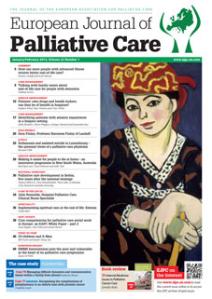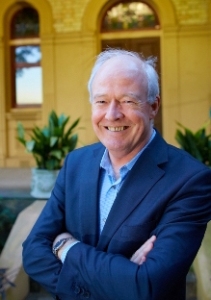Making it easier to die at home
Professor Rod MacLeod is the lead academic for palliative care at HammondCare and Conjoint Professor in Palliative Care at the University of Sydney Medical School, New South Wales, Australia. Here he explains the background to his longer article published in the January/February issue of the European Journal of Palliative Care.
I have devoted more than 25 years of my medical career to palliative care. I regard the past year of my work as perhaps the most significant. In late 2013, the New South Wales state government in Australia allocated an amount of $35 million to a group of four palliative care providers, including HammondCare, to enable people to die at home. Under the ‘Palliative Care Home Support Program’, people are offered up to 48-hour ‘packages’ of home care, to offer a wide range of help to both patients and their families. The packages can be taken in a variety of time blocks – perhaps two hours at a time – or 48 hours consecutively.
This is proving to be an innovative, ground-breaking programme that’s making an enormous difference in the lives of many families. One year on, 79% of people taking up our packages of care have been able to spend their final days at home. This is a stunning result so soon. Instead of the clinical and often intimidating atmosphere of hospital – they are given the choice of dying with, as I put it, ‘The wind in their hair and the sun on their back.’
Roseann Tenhunen was one who took up a HammondCare Home Support ‘package’. She was dying with a cancer of the blood and bone marrow. To mark ‘Palliative Care Week’ in Australia, the national Australian broadcaster ABC recorded the journey of Roseann’s final days. (Follow the link below to view the film). Through five unforgettable days of filming, right up to her death, Roseann never wavered from her decision to die at home.
‘I just thought to myself, “Oh well, if I’ve got to go I have to go. I can’t do anything now.” That’s why I decided I’d go with palliative care. I’d be more happy with palliative care.’
One of Roseann’s daughters, Dolores, was pictured lying next to her mum as life ebbed away. Dolores said:
‘Seeing my mum going like this, going so peacefully, I would like to do this. I would love to have my kids by my side comforting me, talking to me, holding my hand, when I take my last breath. That’s the best way to go.’
The phrase ‘dying with dignity’ is much used today around the world in the escalating debate over euthanasia. Palliative care is and always has been about ‘dying with dignity’ – enabling people to spend their final days in as much comfort and care as we can physically offer. Now, more and more this can happen in the place of their choice.
 Read the full article in the European Journal of Palliative Care
Read the full article in the European Journal of Palliative CareThis post relates to a longer article, ‘Making it easier to die at home – an innovative programme in New South Wales, Australia’ by Rod MacLeod, Cheryl Johnson and Sally Yule, published in the January/February 2015 issue of the European Journal of Palliative Care (vol. 22.1). If you have a web-based subscription to the journal you’ll be able to download this issue, plus all articles in the journal archive. You can also browse the archive and download articles by taking a 10-minute or 30-minute subscription. Members of the EAPC receive discounted subscription rates to the journal – click here to subscribe online.
Links
- HammondCare (specialising in dementia and aged care, palliative care, rehabilitation and older persons’ mental health).

No comments:
Post a Comment